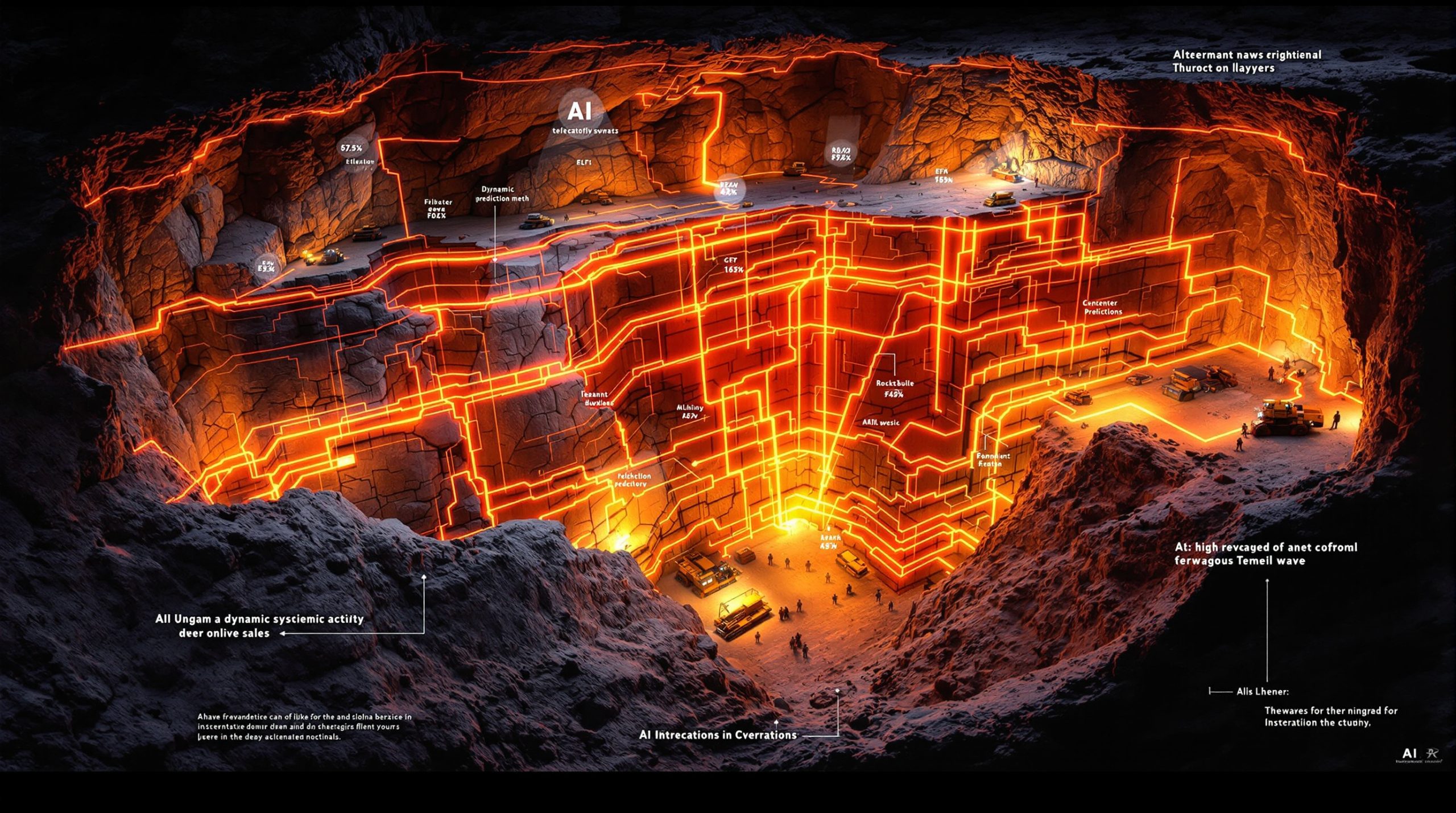Zambia Denies Health Risks Flagged by US Embassy Over February Acid Spill
In a stark contrast of environmental health assessments, Zambian officials have forcefully rejected warnings from the US Embassy about persistent contamination from a major acid spill. The diplomatic disagreement highlights growing concerns about environmental management in one of Africa's key copper-producing regions, with potential implications for public health, diplomatic relations, and industry evolution trends.
What Happened in Zambia's February Acid Spill?
The Tailings Dam Failure
February 2025 marked a significant environmental incident in Zambia's mining sector when a tailings dam failed at a Chinese-operated copper processing facility. The catastrophic breach released approximately 50,000 cubic meters of highly acidic slurry containing heavy metals and processing chemicals into nearby waterways.
The incident occurred at a facility operated by Sino Metals Leach Zambia in the Chambishi area, a key copper mining region in Zambia's Copperbelt Province. Tailings dams, which store waste materials from mining operations, have become increasingly scrutinized globally following several high-profile failures in recent years.
Environmental experts note that tailings dam failures represent particularly severe environmental threats due to both the volume and chemical composition of released materials, which often contain concentrated levels of heavy metals and processing chemicals that can persist in ecosystems for decades.
Initial Contamination Impact
The massive release of acidic slurry immediately raised serious environmental concerns regarding soil and water contamination throughout the region. Acidic mine drainage typically contains elevated levels of copper, lead, arsenic, and other potentially harmful metals that can devastate aquatic ecosystems and contaminate drinking water sources.
Local communities reported discolored water in several streams and rivers following the incident, with initial pH readings showing highly acidic conditions that posed immediate threats to aquatic life. The February spill represents one of the more significant environmental disasters in Zambia's mining sector in recent years, both in terms of volume and potential toxicity.
Environmental scientists familiar with acid mine drainage incidents note that the initial impact often represents only the beginning of a long-term environmental challenge, as contaminated sediments can continue releasing toxins for years or even decades after the original spill event.
Why Are Zambian Officials and the US Embassy at Odds?
US Embassy Health Alert Details
On August 6, 2025, six months after the initial spill, the US Embassy in Lusaka issued a formal health alert regarding the affected area, creating a diplomatic tension point with Zambian authorities. The embassy took the significant step of restricting travel for US officials to the affected Chambishi region, citing ongoing contamination concerns.
According to the embassy's assessment, contamination remains widespread despite the passage of half a year since the incident. Their health alert specifically cited potential contamination in water, soil, and possibly airborne particles around Chambishi, suggesting comprehensive environmental impacts that continue to pose risks to human health.
The travel restriction for US personnel represents an unusual diplomatic step that implicitly questions the Zambian government's environmental management and public health protection efforts in the region. Such alerts typically follow internal environmental and health risk assessments based on multiple sources of information.
Zambian Government's Counterclaims
Government spokesperson Cornelius Mweetwa directly and forcefully contradicted the US assessment, creating an unusual public disagreement over environmental health conditions. According to Mweetwa's statement to Reuters, "Laboratory results show that the pH (acidity) levels have returned to normal and concentrations of heavy metals are steadily decreasing, which means that the immediate danger to human, animal and plant life has been averted."
Zambian officials maintain there is "no need for alarm" regarding current conditions in the affected area, suggesting that remediation efforts have successfully addressed the immediate threats posed by the acid spill. This assessment stands in direct opposition to the US Embassy's position that contamination remains an active concern.
The contradictory positions raise critical questions about testing methodologies, transparency in environmental monitoring, and different standards for what constitutes acceptable risk levels. Environmental health experts note that assessments can vary significantly depending on sampling locations, testing frequencies, and which contaminants are being monitored.
How Has Zambia Addressed the Environmental Impact?
Remediation Efforts
The Zambian government implemented cleanup operations centered on lime treatments as the primary remediation approach. Lime (calcium oxide or calcium hydroxide) application is a standard method for neutralizing acidic conditions in soil and water by raising pH levels to less harmful ranges.
Water and Sanitation Minister Collins Nzovu has been directly involved in overseeing these remediation efforts, demonstrating the high-level governmental response to the incident. The government claims these lime treatment operations have successfully mitigated immediate dangers by neutralizing acidic conditions in affected waterways.
Technical Note: Lime treatment neutralizes acidity but doesn't remove heavy metals from the environment. While pH levels may return to normal ranges, metals often remain bound in sediments or soil, potentially becoming bioavailable under certain environmental conditions.
Environmental remediation experts note that while lime treatment can effectively address immediate acidity concerns, it represents only the first step in a comprehensive remediation program for acid spills containing heavy metals. Long-term monitoring and possibly additional waste management solutions are typically required to address persistent contamination.
Corporate Responsibility Response
Sino Metals Leach Zambia has reportedly cooperated with government authorities throughout the response process. According to government spokesperson Mweetwa, the company "is paying for mitigation measures," suggesting corporate acceptance of financial responsibility for the environmental incident.
When contacted by media outlets, company representatives deferred to government statements rather than providing independent assessments or details about their environmental management practices. This corporate communication approach keeps the government as the primary source of public information about remediation efforts and environmental conditions.
The incident highlights ongoing concerns about environmental management standards in foreign-operated mining operations, particularly regarding critical infrastructure like tailings dams. Industry analysts note that varying standards for environmental protection and public disclosure can create challenges for effective oversight of multinational mining operations.
What Are the Potential Long-Term Consequences?
Environmental Health Concerns
Environmental scientists point out that acid mine drainage can cause persistent environmental damage even after initial neutralization efforts appear successful. Heavy metals may remain in soil and sediment long after pH levels normalize, creating potential for ongoing contamination through various exposure pathways.
One particular concern is the potential bioaccumulation of heavy metals in local food chains, which could present ongoing health risks to communities that rely on local agriculture or fishing. This bioaccumulation process can actually increase toxicity over time as metals become concentrated in organisms higher in the food chain.
The conflicting assessments between Zambian authorities and the US Embassy raise serious questions about testing methodologies and transparency in environmental monitoring. Key differences may include:
- Sampling locations: Testing different areas can yield dramatically different results
- Monitoring frequency: Single-point-in-time testing vs. continuous monitoring
- Contaminants tested: Testing only for pH vs. comprehensive heavy metal analysis
- Risk assessment standards: Different thresholds for what constitutes "safe" levels
Diplomatic Implications
Minister Collins Nzovu has indicated that Zambia would engage with US officials regarding their concerns, suggesting some diplomatic willingness to address the contradictory assessments. However, the public nature of the disagreement creates potential for diplomatic tension between the countries.
The situation highlights different standards of environmental risk assessment between nations and raises questions about international norms for transparency in environmental incidents. Public health protection often involves complex risk assessments that can vary significantly between regulatory systems and cultural contexts.
International perception of Zambia's environmental management practices may be affected by this high-profile disagreement, potentially impacting everything from tourism to foreign investment. Environmental governance reputation has become increasingly important in international relations, particularly for resource-rich nations seeking sustainability transformation.
How Does This Incident Reflect Broader Mining Industry Challenges?
Tailings Management Issues
The Chambishi incident underscores ongoing global concerns about tailings dam safety, which have intensified following catastrophic failures in Brazil, Canada, and elsewhere. The International Council on Mining and Metals (ICMM) has been working to establish global standards for tailings facility management following these high-profile incidents.
Similar failures have occurred in other mining regions worldwide with devastating consequences for both ecosystems and human communities. The 2019 Brumadinho dam disaster in Brazil, which killed 270 people, dramatically highlighted the potential human cost of tailings management failures.
Industry standards for tailings management continue to evolve, with increasing emphasis on:
- Independent technical review requirements
- Comprehensive risk assessments
- Emergency preparedness planning
- Community engagement and transparency
- Decommissioning strategies for aging facilities
The Chambishi incident may prompt reassessment of tailings facilities throughout Zambia's mining sector, potentially leading to improved standards and monitoring practices. Environmental engineers note that existing facilities often present greater risks than newer ones built to more stringent standards.
Balancing Economic and Environmental Priorities
Copper mining represents a crucial economic sector for Zambia, contributing significantly to export earnings, employment, and government revenue. The country's economic dependence on resource extraction creates complex governance challenges when environmental incidents occur.
Environmental incidents create inevitable tension between economic development imperatives and public health protection responsibilities. Government responses must navigate competing priorities:
- Maintaining investor confidence in the mining sector
- Protecting public health and environmental resources
- Ensuring accountability for environmental damages
- Preserving diplomatic relationships with key partners
Foreign investment in mining brings both economic benefits and environmental responsibilities that require careful management. The Chambishi incident illustrates how this balance can become particularly challenging when foreign-operated facilities experience environmental failures in host countries.
The government response reflects the challenge of addressing environmental concerns without disrupting economic activity that provides livelihoods for many citizens. This balancing act represents a fundamental challenge for resource-dependent economies worldwide, especially those contributing to global copper supply.
FAQ: Zambia's Acid Spill Situation
What exactly was released in the Zambian acid spill?
The February 2025 spill released approximately 50,000 cubic meters of acidic slurry containing various heavy metals and processing chemicals from a copper processing facility's tailings dam. This material typically contains elevated levels of copper, lead, arsenic, and other metals, along with sulfuric acid and other processing chemicals used in copper extraction.
How can acid spills affect human health?
Acid spills can contaminate drinking water, agricultural land, and food sources with heavy metals and toxic compounds. Potential health effects include respiratory issues, skin irritation, gastrointestinal problems from consuming contaminated water or food, and long-term exposure risks that may include neurological effects, kidney damage, or increased cancer risks depending on specific contaminants involved.
What is the role of lime in acid spill remediation?
Lime (calcium oxide or calcium hydroxide) neutralizes acidic conditions by raising pH levels. When applied to contaminated areas, it helps reduce the immediate toxicity of acidic environments but doesn't necessarily remove heavy metals. The chemical reaction converts highly soluble metal forms into less soluble forms, potentially reducing their mobility in the environment but not eliminating them.
How long do environmental effects from acid spills typically last?
Environmental impacts can persist for years or even decades, depending on the volume and composition of the spill, remediation effectiveness, and local environmental conditions. Heavy metals can remain in soil and sediment long after acidity is neutralized. In some cases, contamination can continue to spread through groundwater movement or be remobilized during heavy rainfall events, creating long-term management challenges that require mine reclamation innovation.
Further Exploration:
Readers interested in learning more about environmental impacts of mining operations can also explore related educational content, such as Reuters' reporting on environmental challenges in global mining regions or review international standards for tailings management through resources provided by the International Council on Mining and Metals.
Disclaimer: This article discusses ongoing environmental conditions and conflicting official assessments. Environmental conditions may change, and official guidance should be sought from local authorities regarding current safety recommendations for affected areas.
Want to Capture the Next Major ASX Mineral Discovery?
Discover how to identify significant ASX mineral discoveries before the broader market with Discovery Alert's proprietary Discovery IQ model, which transforms complex geological announcements into actionable investment insights. Explore historic examples of exceptional discovery returns at https://discoveryalert.com.au/discoveries/ and position yourself ahead of the market with a 30-day free trial.




